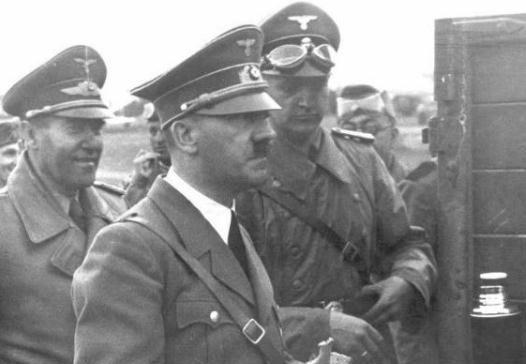As we all know, Hitler was the master of blitzkrieg in modern history. At the beginning of World War II, he and the officers of the Third Reich created the Blitzkrieg and won Poland and Czechoslovakia, needless to say. Within a month, France, the world's largest military power, was defeated. In the first half of the Soviet-German war, the Soviet Red Army was defeated and the Soviet army was pursued all the way to Moscow. But you might not believe that a Chinese soldier came up with a similar strategy a decade ago. He was Fu Zuoyi, the general of the Jin Sui Army, known as the Seven Roads and a Half General. Listen to the name. Seven and a half way is only half a step away from eight roads. This should start with the tactics of Fu Zuoyi's army.

At the beginning of the War of Resistance Against Japan, the strategic thinking of most Kuomintang officers was relatively backward, and they only knew how to fight a hard battle with the Japanese on the battlefield. It was brave, but it was a huge loss. Although the Kuomintang's weapons and equipment were much better than those of the Red Army, they were not enough to show off in front of the industrial powerhouse Japan. In contrast, however, the tactics of Fu Zuoyi's army were more flexible. He boldly learned the tactics of the Eighth Route Army and walked around the enemy's back. He adopted guerrilla warfare, borrowing from the model of the Eighth Route Army. Yan Youwen, the director of the political department of his main division, was actually a Communist. In addition, his attitude was more pro-communist, so he was called the Seven-Way Half-General.
It's a bit far. Let's go back to Fu Zuoyi's lightning tactics. You don't necessarily believe it when you say it. Honestly, Blitzkrieg is easy to say and not easy to execute. Hitler's blitzkrieg method was to bombard the enemy's air force, occupy air control, and then the armored forces raided, constantly rushing to the enemy's defense line, making the enemy tremble and greatly reduce the combat effectiveness. Subsequently, the infantry marched rapidly, forming large and small circles, dividing and encircling the enemy.
In contrast, Fu Zuoyi's conditions were still not enough. Because there are not many aircraft, there are fewer mechanized troops. There is no equipment, only to find your own way. He asked Wang Lezhen, the commander of the guard battalion, to summon all the army vehicles, and asked the workers to add armor to the vehicles and upgrade them to armored vehicles. This is a real photo of an armored vehicle. It looks like a normal car. At best, it was a metal cover mounted on the front of the truck, with light machine guns and heavy machine guns on both sides. The practical effect is limited. It can withstand bullets, but not shells.
Compared with Japanese tanks, Fu Zuoyi's armored vehicles were much simpler. However, behind the simple equipment, Fu Zuoyi carefully studied the military strategic thinking: concentrating forces, using all the motor vehicles that the army can deploy, and establishing rapid attack forces, which coincided with the main purpose of Hitler's Blitzkrieg. In 1936, Fu Zuoyi fought many battles against the Japanese puppet army at the Bailing Temple. Japanese infantry came to invade. Fu Zuoyi sent a group of armored vehicles and rushed to the enemy's infantry without any hurry. He first demoralized the enemy, and then the main force of the Shanxi Jin Sui Army rushed towards the enemy in a well-trained manner. During the battle to restore the temple, Japanese advisers were even attacked by armored vehicles, wiping out japanese and puppet troops.
In other words, the reason why Fu Zuoyi was so good at sports warfare had a lot to do with his jurisdiction. His main defensive areas were Shanxi and the Suiyuan Plain, which were thousands of miles of open land that favored long-range attacks by cavalry. In Fu Zuoyi's strategic thinking, armored units were created by cavalry, which was a mobile version of cavalry.